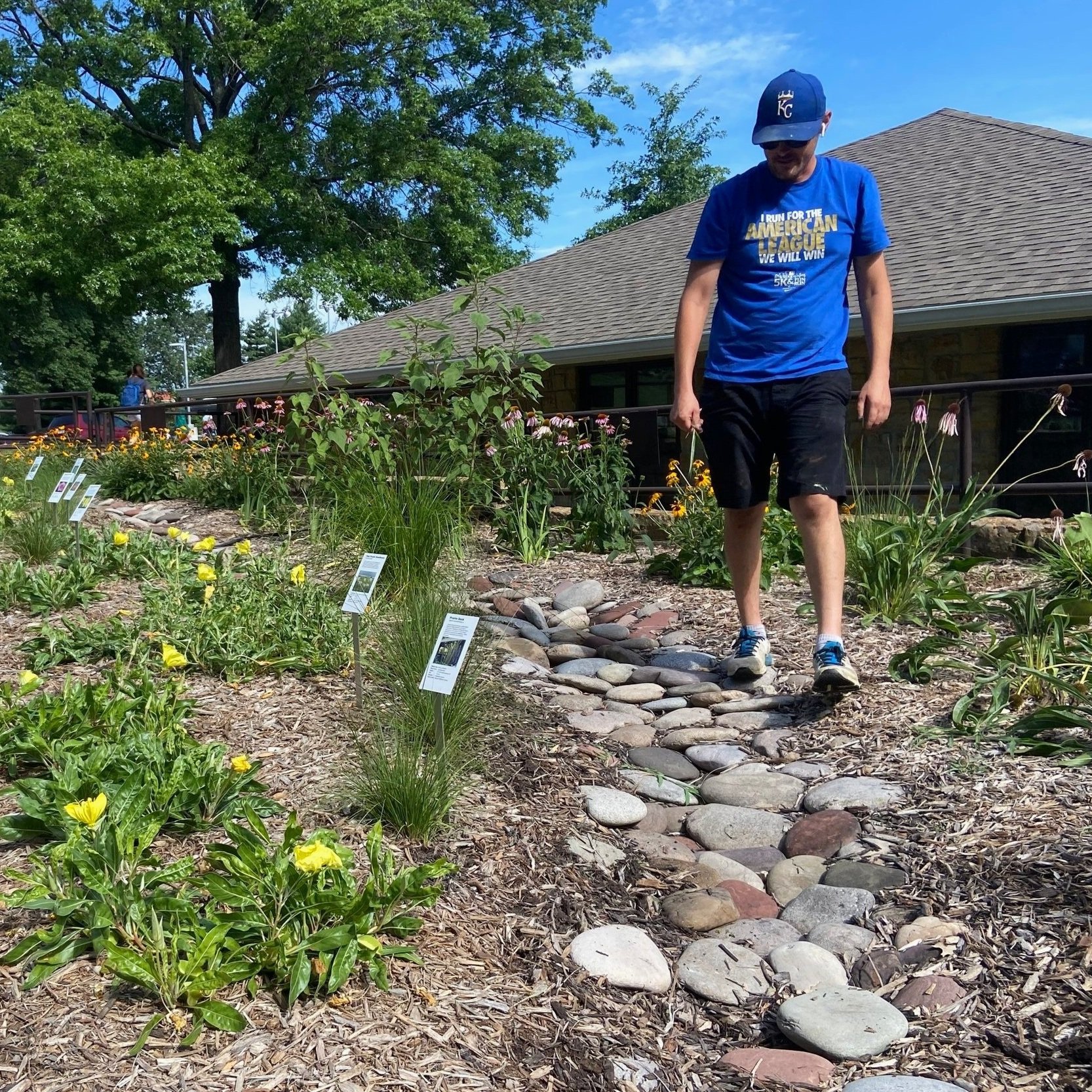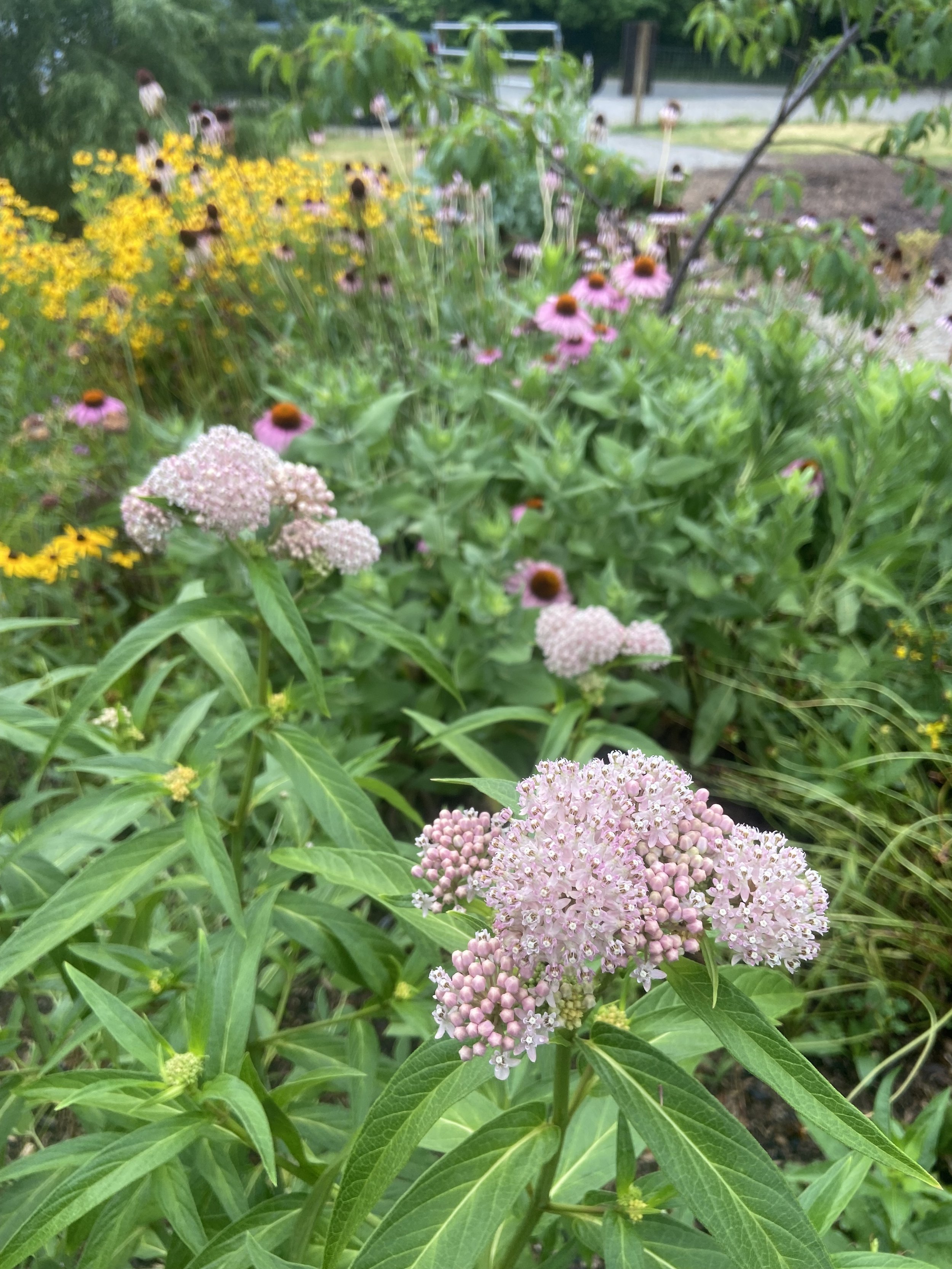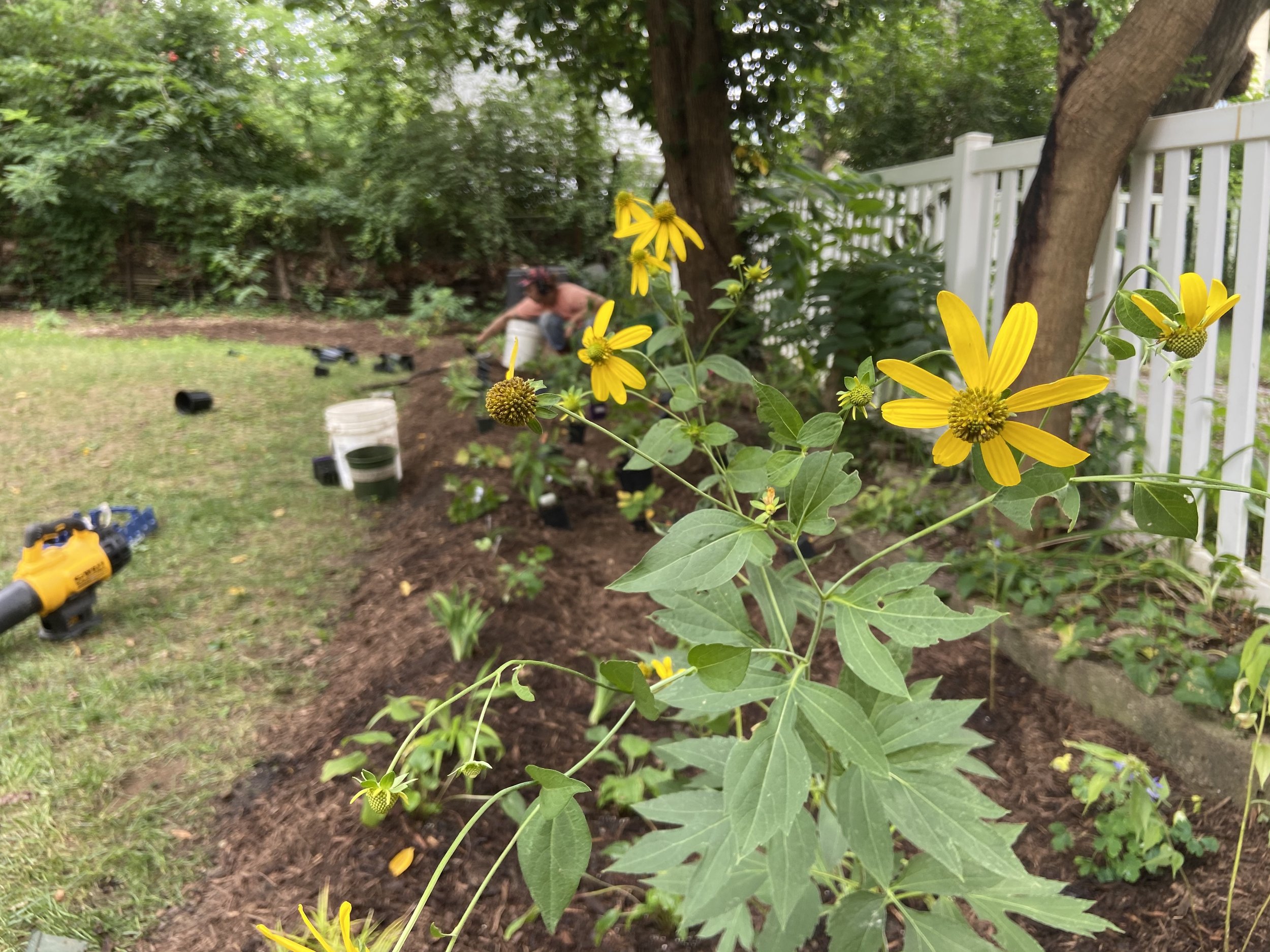
Maintaining Native Landscapes
This native landscape maintenance guide will be primarily dealing with gardens in urban and suburban areas where burning is not an option. Maintenance of a native planting can be done with some pretty simple tools, bellow is a list of some tools we have found helpful.
Tools:
Hori Hori Garden knife - This is a must have tool, great for weeding and planting small plants.
Garden hoe or action hoe - Great for weeding between densely planted plants.
Spade Shovel - Ideal for planting large plants, moving soil, and removing root balls.
Root Slayer Shovel by Radius - This shovel is great for planting, weeding, and removing invasive woody species.
Hedge sheers - Great for shaping plants.
Garden sheers - Great for trimming, seed collecting, and spring clean up.
5 gallon bucket - Great for weeding, planting, and sitting on for breaks.
Maintenance Strategies: There is a lot of different ways you can maintain a native planting, but the overall concept is to keep out invasive species and keep diversity in the planting itself. Depending on your garden style and personal taste you will probably do one of the following or a combination of:
The “Do Little” Strategy: This strategy involves simply keeping out invasive and other unwanted species and letting the letting the garden do its thing. The garden will change every year as some species thrive one year and struggle another.
The “Do Some” Strategy: This strategy involves removing invasive species, a spring clean up (cutting back old stems 4-6 inches from the ground in the spring once temperatures are in the 40’s), and keeping some aggressive native species in check.
The “Do A lot” Strategy: This Strategy involves everything from the first two strategies plus the following: trimming plants as the season goes, transplanting plants to keep gardens shape and intention, and dead heading certain species to prolong bloom times.
Whichever of these strategies you decide on it is important to keep in mind the goal of your planting. If your goal is to benefit wildlife, then doing as little clean up in the garden as possible is best. Many insect species overwinter in stems of native plants and in their fallen leaves. Also many different species of birds and small mammals will feed from the seed heads during the winter. Since most of us can not burn our urban native plantings, which would burn up a lot of the dead plant material that builds up over time, you may notice areas where the leaf liter is to thick for the plants to poke through. In this case during the spring and summer months remove some of the thick leaf liter and either spread it out thinner through the garden or add it to a compost pile.
Quick Tips:
Asters can be trimmed every holiday in the summer to make dense plants that look similar to fall mums
Collecting seed during the season to expand plant population is a cost effective way to add more plants to your garden.
Dead heading lance leaf coreopsis will keep it blooming for most the summer
Water in evenings or early mornings
Winter watering tip: place ice around the drip line of plants that may still need water so that it can melt on warm days.
Garden Maintenance by Month:
January garden maintenance: Enjoy the beauty of the winter in the garden. Notice the different birds that visit the native plants looking for seeds as food. If we have had a dry winter, you could water your garden on a warm day. Be sure to leave water out for birds.
February garden maintenance: Many cool season native plant species will start to break dormancy in mid February around Kansas City. Enjoy the new growth. At the very end of February, you may want to quickly edit out lettuce and henbit from the garden to get ahead of the Spring weeding. Be sure to weed on warmer days, so that the roots of your native plants aren’t too disrupted during particularly cold days.
March garden maintenance: In March, many cool season native plants will begin to break dormancy. You can begin to edit out unwanted cool season plants and begin planting as soon as the ground has thawed.
April garden maintenance: Once the average temperature is about 50 degrees, you can begin to remove last year’s growth and excessive leaf litter. The longer you wait in the spring, the safer it is for native insects to have a chance to begin to move around for the year. If you don’t need to remove last year’s growth for aesthetic reasons, or because of a large buildup of material, feel free to leave it in the garden. April is a wonderful time to begin planting. Most native plant species will break dormancy in April.
May garden maintenance: Edit out any unwanted species, plant new plants and water in recently planted plants. Enjoy the different insects and birds visiting the garden
June garden maintenance: Edit out any unwanted species, plant new plants and water in recently planted plants. Enjoy the different insects and birds visiting the garden. You can plant through the summer, but take note that planting after mid June will require dedication to watering.
July garden maintenance: Edit out any unwanted species and water recently planted plants as needed. In drought years, you may want to check your older native plants and give them water as needed. Be sure to leave very small pools of water for birds and insects in particularly dry weeks
August garden maintenance: Edit out any unwanted species and water recently planted plants as needed. In drought years, you may want to check your older native plants and give them water as needed. Be sure to leave very small pools of water for birds and insects in particularly dry weeks. If cooler weather is in sight at the end of August, you can begin fall planting season
September: Edit out unwanted species and continue to water as needed. September is a wonderful time to plant new perennials, trees and shrubs in the garden
October: Edit out unwanted species and continue to water as needed until temperatures begin to dip into the 40’s. Perennials, Trees, and shrubs can be planted until the ground is too difficult to work. If you need to remove leaves, try to remove them as they drop, so less insects begin to make their winter homes in the leaves and duff. Leave seed heads and stems of plants if possible.
November: Water occasionally if temperatures are unseasonably warm and we haven’t had rain for a while. Trees and shrubs can be planted until the ground is too difficult to work.
December: Enjoy the winter beauty of the garden and water once if temperatures have been unseasonably warm and we haven’t had rain. If you planted trees and shrubs late into the season, water them the day before extremely low temperatures.







